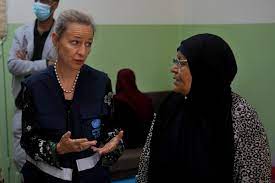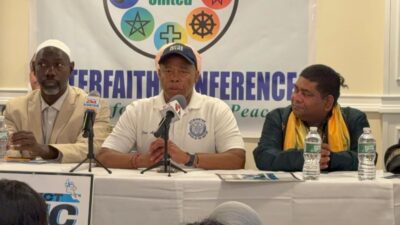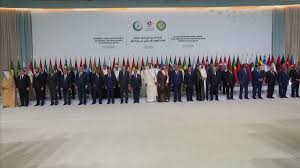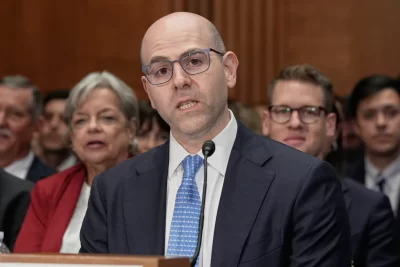
Nearly a week after a cease-fire agreement between warring factions in Lebanon’s largest Palestinian refugee camp brought a fragile peace, hundreds of displaced residents see no immediate prospects of return.
Some have lost their houses, while others do not trust that the calm will hold. For many, it’s not the first time they have been forced to flee their homes.
Among them is Munira Abu Aamsha, 63, who left the camp near the city of Sidon in southern Lebanon with her family, ducking from alleyway to alleyway under a rain of bullets.
She has been sleeping for the past 10 days with her daughters and grandchildren in a classroom converted into a dormitory at a vocational training center run by the U.N. agency for Palestinian refugees, or UNRWA, in the nearby town of Sebline.
Abu Aamsha was born in the Tel al-Zaatar refugee camp near Beirut, where her parents had taken refuge after the war over the creation of Israel in 1948. She escaped from the camp as a teenager in 1976, she said, when Lebanese Christian militias who battled against the Palestinian Liberation Organization in Lebanon’s civil war besieged and then razed the camp, killing many of its inhabitants.
“I’ve been through more than one war and I’m not afraid for myself, but I’m afraid for my children,” Abu Aamsha said. “Now my children are living through the same thing I went through.”
She doesn’t know if her house is still standing, but she doesn’t want to go back to it.
“We just want to be able to settle down in one house and not have to flee from place to place,” she said.
Abu Aamsha’s story is emblematic of many of the displaced camp residents, said Dorothee Klaus, UNRWA’s director in Lebanon.
“They’re very tired — multiple times they’ve lost everything they own,” she said.
Some 800 people displaced from Ein el-Hilweh are staying in shelters set up by the agency, Klaus said, including at schools in the area surrounding the camp that were supposed to go back into session on Oct. 2 but now will be delayed. Hundreds more are staying in mosques and other shelters not run by UNRWA, and potentially thousands with relatives in the surrounding area.
The latest cease-fire agreement reached Thursday between Palestinian President Mahmoud Abbas’ Fatah group and Islamist militant groups in the camp came after clashes that killed at least 18 people and wounded more than 100. A previous round of clashes earlier in the summer killed at least 13.
The UNRWA has yet to receive any of the $15.5 million it appealed for last month to respond to the fallout of the previous round of clashes, Klaus said.
Those funds are needed to find alternate places for about 6,000 children whose schools in the camp have been damaged and are still occupied by militants, to give cash aid to displaced families, and to start clearing rubble and removing leftover explosives from the camp, she said.
Ibtisem Dahabri, who is also staying at the center in Sebline, has lived in Ein el-Hilweh her whole life, weathering several previous rounds of clashes between factions in the camp. This time, she said, her house was burned and is now uninhabitable.
“We’ve been displaced from the camp many times, but this time really hurts,” she said.
Dahabri used to tell friends in the neighboring city of Saida that “our camp is better,” she said. “The camp had everything and we all loved each other and stood together.” But now she no longer wants to go back.
Today, she said, “if they gave me a palace in the camp, I don’t want it.”




